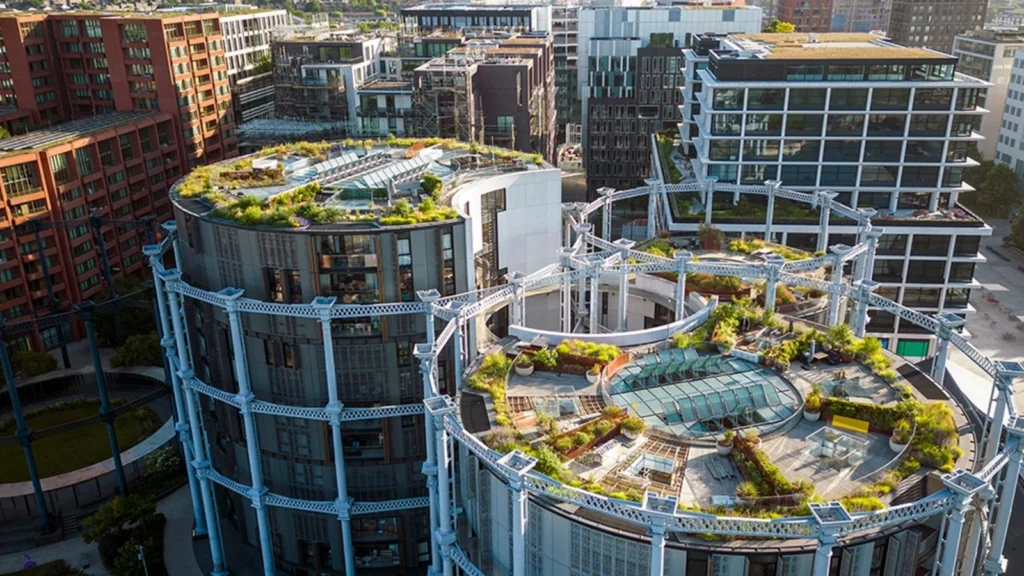
Models of Affordable Sustainable Housing for a Greener Future
In today’s world, the need for affordable sustainable housing models is more pressing than ever. With increasing environmental concerns and the rising cost of living, finding ways to provide housing that is both eco-friendly and affordable is crucial. This article explores various models of affordable sustainable housing and how they are shaping our future.

Understanding the Concept of Sustainable Housing
Sustainable housing focuses on minimizing environmental impact while ensuring affordability and comfort. It involves using eco-friendly materials, energy-efficient designs, and innovative construction techniques. By understanding these concepts, we can better appreciate the numerous benefits these housing models offer.
The Importance of Affordability in Sustainable Housing
While sustainability is essential, affordability remains a significant factor in housing decisions. The goal is to create homes that are accessible to everyone, regardless of their financial situation. This is particularly important in densely populated urban areas where housing costs often exceed the average income.
Innovative Construction Techniques
One way to achieve affordability is through innovative construction techniques. Prefabricated and modular homes are excellent examples. These methods reduce construction time and costs while maintaining high-quality standards and environmental sustainability.
Eco-friendly Building Materials
Using eco-friendly building materials is another critical aspect of sustainable housing. Materials like bamboo, recycled steel, and reclaimed wood not only reduce the carbon footprint but also lower overall costs. These materials are durable, energy-efficient, and sustainable.
Models of Affordable Sustainable Housing Around the World
Many countries have adopted different models of affordable sustainable housing to address their unique challenges. Let’s explore some of these models and how they are making an impact globally.
Europe’s Passive House Model
The Passive House model is prevalent in Europe, particularly in Germany and Austria. This model focuses on energy efficiency, using thick insulation, triple-glazed windows, and airtight construction to minimize energy consumption. As a result, residents enjoy lower utility bills and a reduced carbon footprint.
North America’s Net-Zero Energy Homes
In North America, the Net-Zero Energy Home model is gaining popularity. These homes produce as much energy as they consume, using renewable energy sources like solar panels and wind turbines. This approach not only reduces utility costs but also contributes to a cleaner environment.
Asia’s Green Building Initiatives
Asia has embraced green building initiatives, with countries like China and India leading the way. These initiatives focus on sustainable urban development, incorporating green spaces, efficient public transportation, and eco-friendly building materials to create affordable housing solutions.
Africa’s Community-driven Housing Projects
In Africa, community-driven housing projects are making a significant impact. These projects prioritize local materials and labor, empowering communities and creating job opportunities. By focusing on sustainability, these projects ensure long-term benefits for residents and the environment.
Challenges and Opportunities in Affordable Sustainable Housing
While there are numerous benefits to affordable sustainable housing, several challenges must be addressed. These include financing, regulatory barriers, and public awareness. However, these challenges also present opportunities for innovation and collaboration.
Financing Sustainable Housing Projects
Financing remains one of the most significant challenges in affordable housing projects. To overcome this, governments and private institutions must work together to provide incentives and support for sustainable housing initiatives.
Regulatory Barriers and Solutions
Regulatory barriers can hinder the development of sustainable housing projects. To address this, governments must streamline approval processes and develop clear guidelines for sustainable construction practices. Additionally, public awareness campaigns can help promote the benefits of sustainable housing.
The Role of Technology in Sustainable Housing
Technology plays a vital role in advancing sustainable housing models. Innovations in smart home technology, energy-efficient appliances, and renewable energy systems contribute to the development of affordable and eco-friendly homes.
Smart Home Technology
Smart home technology enhances energy efficiency and convenience. Automated systems for lighting, heating, and cooling reduce energy consumption and lower utility bills. These technologies also improve the overall quality of life for residents.
Renewable Energy Systems
Renewable energy systems, such as solar panels and wind turbines, are integral to sustainable housing. These systems provide clean energy, reducing reliance on fossil fuels and lowering the carbon footprint of homes.
Future Trends in Affordable Sustainable Housing
The future of affordable sustainable housing looks promising, with several trends on the horizon. As technology advances and public awareness grows, these trends will continue to shape the housing landscape.
Integration of Nature and Urban Living
Future housing models will increasingly integrate nature into urban living. Green roofs, vertical gardens, and urban agriculture are becoming more common, promoting biodiversity and improving air quality in cities.
Collaborative and Co-living Spaces
Collaborative and co-living spaces are gaining popularity as affordable housing solutions. These spaces encourage social interaction and resource sharing, reducing costs and fostering a sense of community. Learn more about co-living solutions.
Conclusion: A Path Towards a Sustainable Future
In conclusion, models of affordable sustainable housing offer a path towards a greener and more equitable future. By embracing these models, we can address environmental challenges while ensuring that everyone has access to safe and affordable homes. As we continue to innovate and collaborate, the dream of a sustainable future becomes increasingly attainable.

FAQ Section
What are the main benefits of sustainable housing?
Sustainable housing offers numerous benefits, including reduced energy consumption, lower utility bills, and a smaller carbon footprint. Additionally, these homes often provide a healthier living environment and promote resource conservation.
How can I make my home more sustainable?
You can make your home more sustainable by using energy-efficient appliances, installing renewable energy systems like solar panels, and choosing eco-friendly building materials. Additionally, consider implementing smart home technology to optimize energy usage.
What role does government play in promoting sustainable housing?
Governments play a crucial role in promoting sustainable housing by providing incentives, streamlining regulatory processes, and raising public awareness. They can also support research and development initiatives to advance sustainable housing technologies.
This article contains affiliate links. We may earn a commission at no extra cost to you.